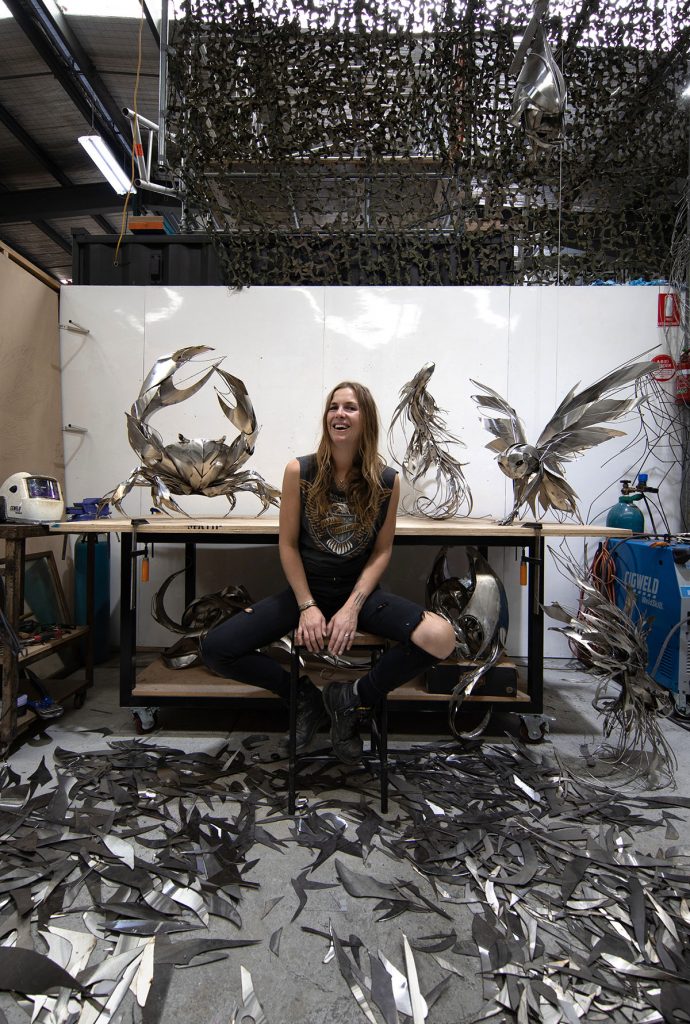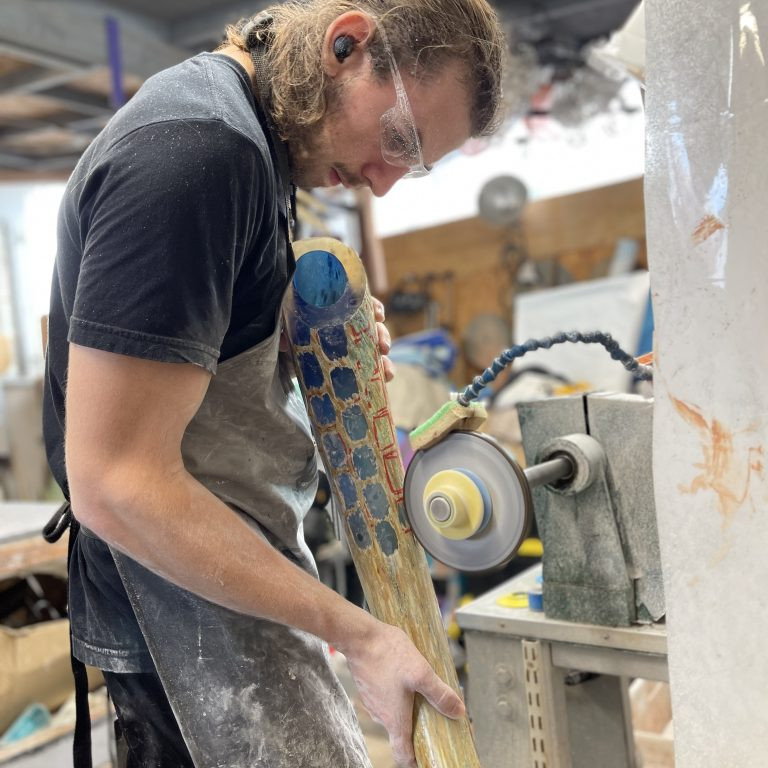Georgie Seccull Installation Artist
How did you become involved in the Art of Dining exhibition at the NGV (National Gallery of Victoria)?
Briefly discuss how the ‘whole’ table setting was done.

Dancing in the Dark
I was invited to be involved by Adelaide Bragg for the 2016 exhibition and ended up taking on 2 tables that first year, my own as well as a collaboration with Minimax. Both tables featured exotic otherworldly birds. This year the brief was lavish excess, with the encouragement to be as wild as we liked, so I created a scene where Siamese fighting fish swam up out of the table and danced above you as you ate.

Dancing in the Dark, detail
The fish were made out of steel and paper, which then all the paper scraps and off cuts left over from the fish were used to create a dark and dreamy coral reef below. As for the table settings, all credit goes to my mum for putting all that together, she styled the entire thing.

Dancing in the Dark, detail
Explain about your studio.
Well right now my partner and I are actually in the process of moving both home and studio from inner city Melbourne to St Andrews, a small town out in the bush about 45 mins from the city. There is a beautiful shed here that was built from all kinds of incredible salvaged materials; frames from old Melbourne piers, church windows, dairy doors. It’s a work of art in itself and so we are very excited that it will be home to all our future creations.
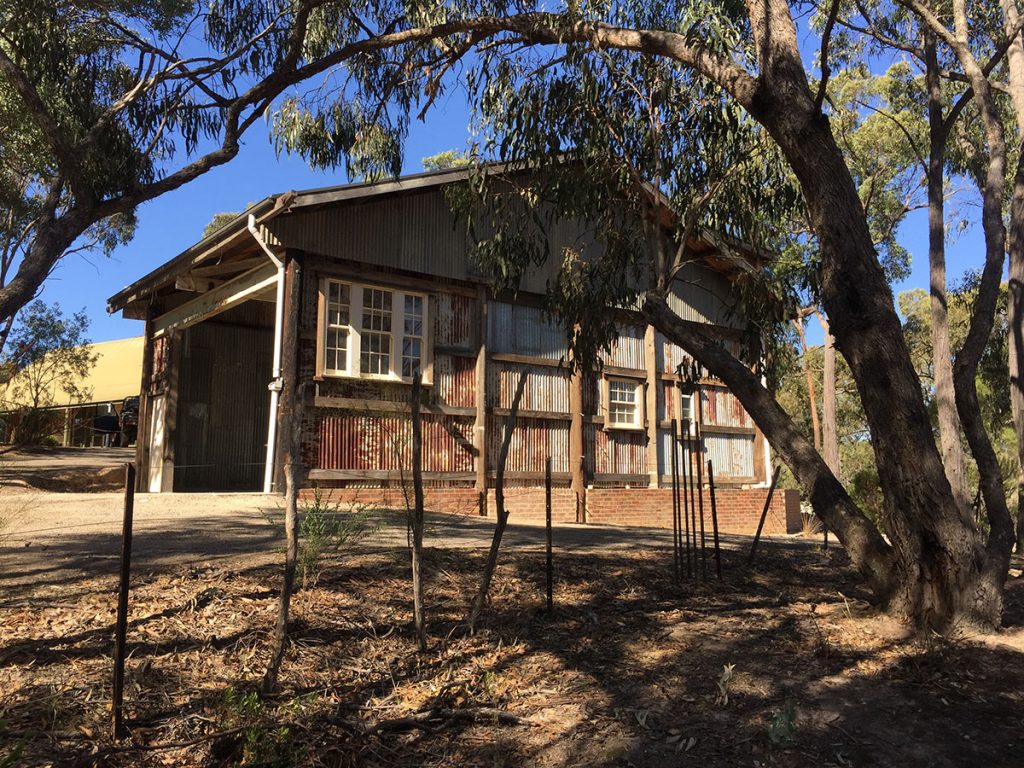
Please take us through the process of one piece, from the inspiration to the completion.

It usually begins with an expression or movement I have in my head. I’ll draw up a little sketch and then find references that allow me to understand how that movement would work – for example if it’s an animal I’m making I’ll look at how their muscular structure moves and I’ll try and work out how it would move to get in the position I have in my mind.
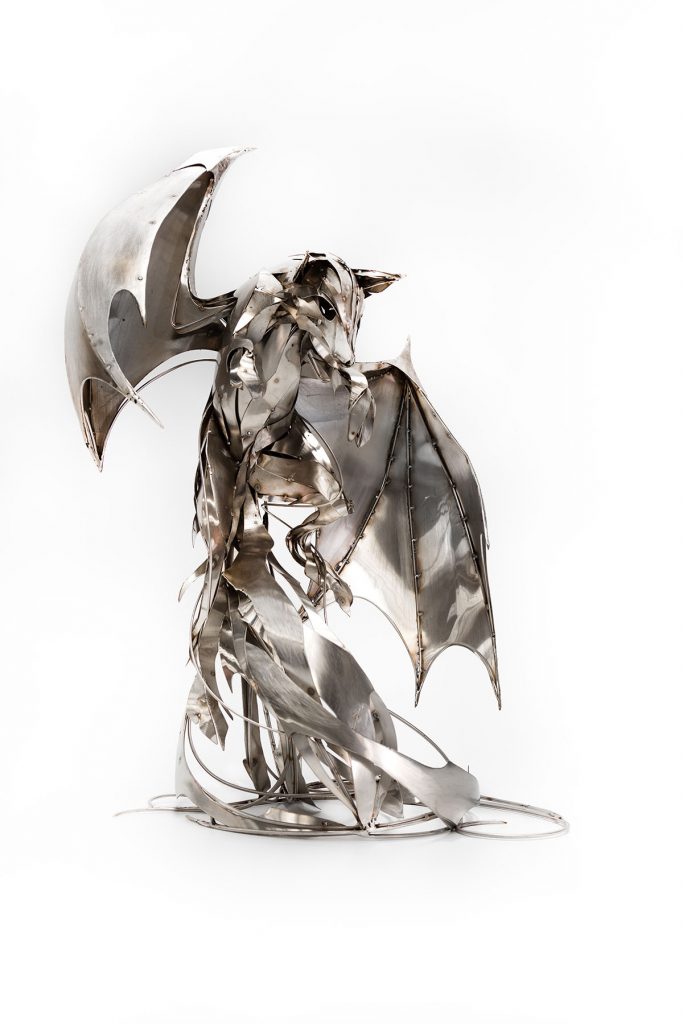 Transcendence
Transcendence
Then I’ll begin to create the internal frame. For me, this is the most important part – it dictates to movement and flow of the overall piece. Once that is done it becomes very organic from there, picking up pieces one at a time and letting each one come together to dictate the outcome.
Discuss ‘Geisha Garden’ both the large suspended truss and closer center pieces.
 Geisha Garden
Geisha Garden
Geisha Garden was created for Monash University graduations marquee. I wanted to create a garden within the marquee that felt like it was alive, with lustrous petals blooming from the tails of exotic birds and strange unusual flowers growing from geometric metal structures.

Geisha Garden, detail
It was a very tight timeframe with only 3 weeks to get it done. I had a team of girlfriends in the studio most days, cutting and pinching and curling each individual petal and leaf, which I would then glue together one by one to create each flower.
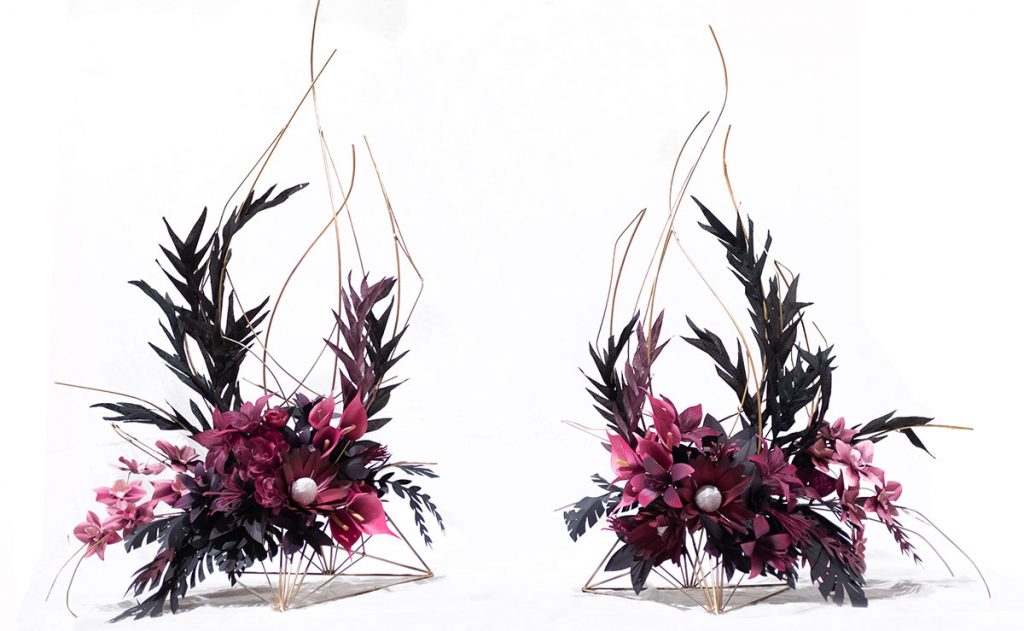
Geisha Garden, detail
Expand on ‘Symbiosis’ at the Mistere Spa Forest Retreat in NSW.
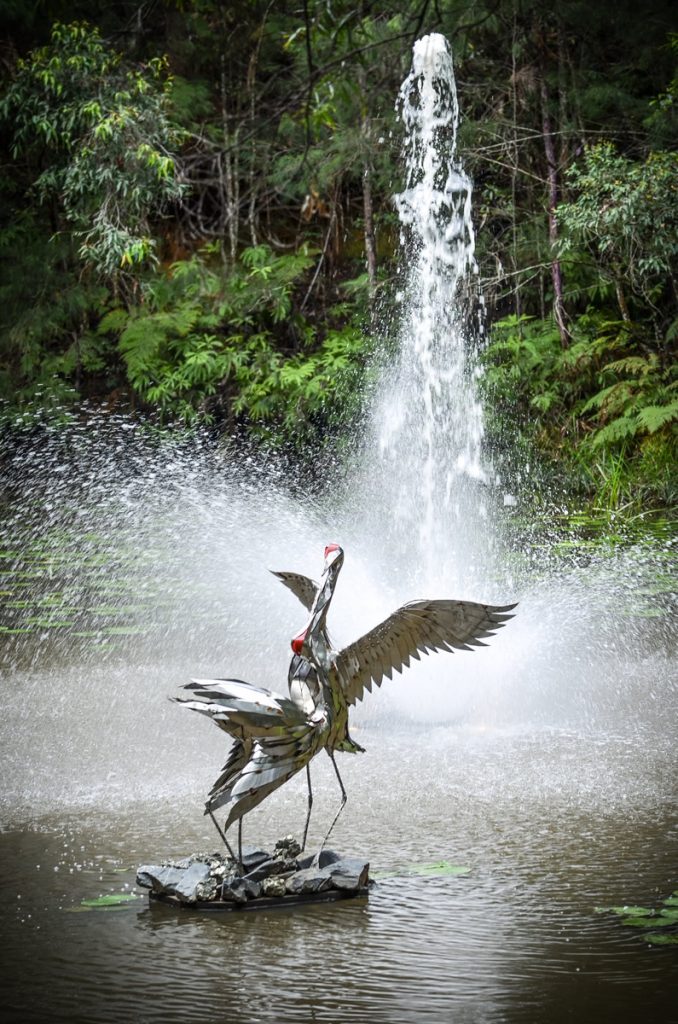
Symbiosis
Symbiosis was quite an unusual piece, in the sense that it was specifically made to be installed on a tree stump, in a pond, in the middle of the rainforest. The piece is 2 brolgas performing their ritualistic dance that bonds them for life. Seemingly a choreographed performance, their graceful strutting and bowing is an instinctive art form, with the rainforest and the water fountain in the background, I thought it was the perfect stage for them to perform on.
Show us your work with bees, discuss.

The bees were made for the International Garden and Flower Show. They’re made entirely from salvaged materials. The bodies are made from wooden shelves found in hard rubbish that I carved into shapes and then burned with a blowtorch to give them their stripes. Their little legs are made out of the metal binders of filing cabinet folders, their eyes are made from teaspoons I found in the op shop and their wings are shaped from wire.
Comment on recycled materials that you have used in a piece.
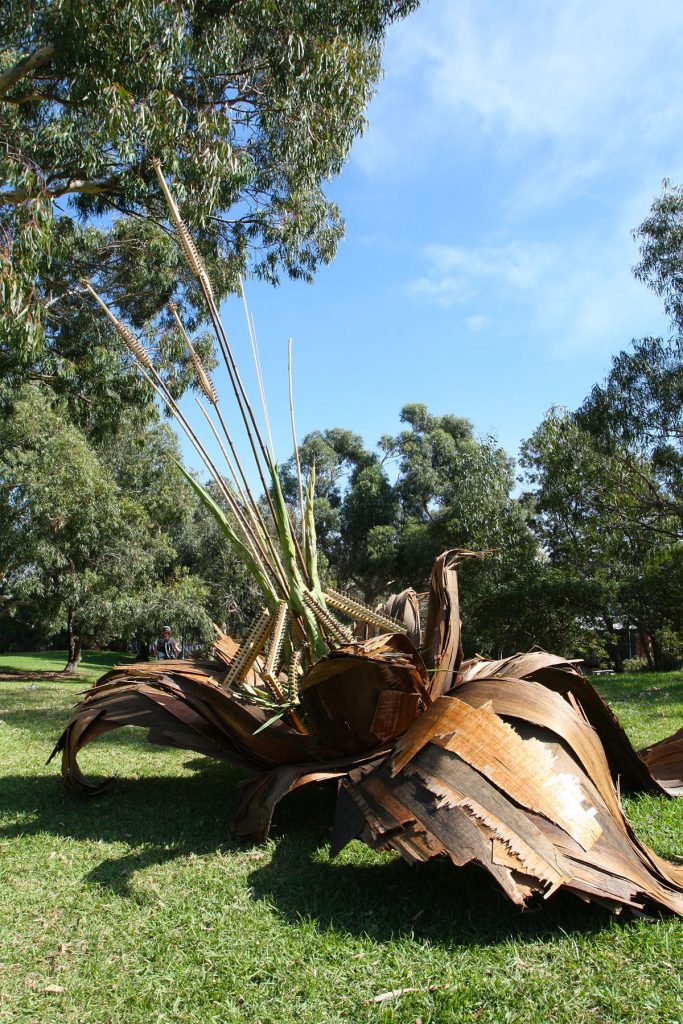
Another Earth
‘Another Earth’ is a piece made entirely from salvaged and natural materials. It was created for an organic land art exhibition ‘From Nature’ where the brief was ‘What would nature look like if it could transform and evolve itself into self-expression?’ I had found some old aged plywood on the side of the road that had developed wonderful brown tones throughout it. Using a paint scraper I was able to scrape back its layers into thinner sheets that I could then weave together to create the petals. For the inside of the flower I used wooden bits and pieces I’d found in a recycle place and then detailed them with leaves, gumnuts, acorns.

Another Earth, detail
Discuss ‘BIG’ use ‘Crystal Palace’ to explain how you work big.

Crystal Palace
For large scale projects, there always needs to be an internal structure that is the main frame and then everything can be suspended from that. For Crystal Palace, my job was made easier as there was already an existing truss in the pavilion. For large projects, I always begin by making a mini model first and then use that as a reference to work from. In the case of Crystal Palace that was the first major project I ever took on and at the time I was working out of my mum’s house. I had worked out the circumference of the truss was 26 metres. My mum’s side fence was 16 metres and I remember draping material down the fence, cutting it into shape and hoping it would all come together when it came to install. Nowadays with a much bigger studio, I am able to build the framework and work onto it, creating the artwork in sections so that it can be easily transported and installed.
Further afield you have done an installation in Ireland explain how this came about and how it was done.
The chapel installation in Ireland was for our friend’s wedding.
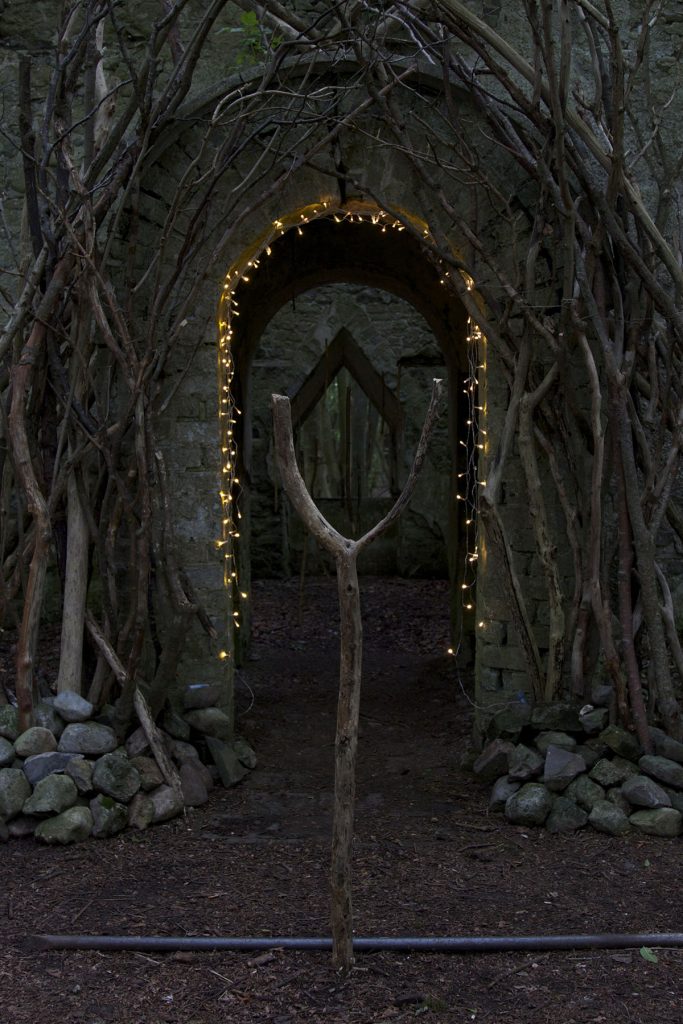
When we arrived they asked my partner and I if we could bring to life this old abandoned cottage that was on the property of this beautiful Irish manor.
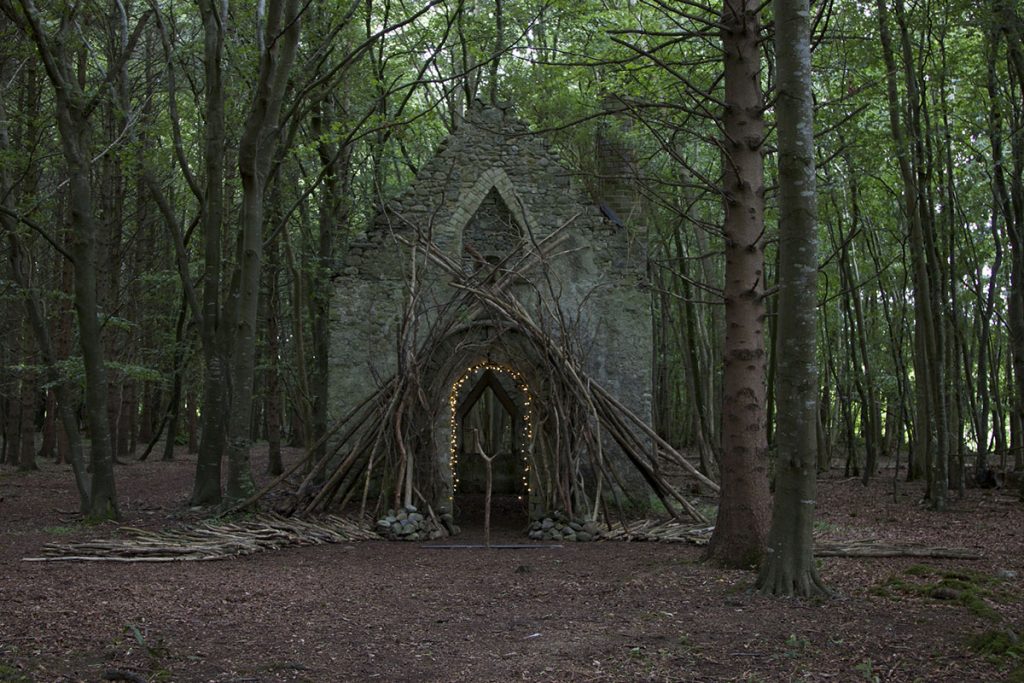
That project was a lot of fun, probably because it was for our friends but also because it was so spontaneous – we only had 1 day to run around sourcing whatever we could find laying about in the woods and create something magical to for them to get married under.
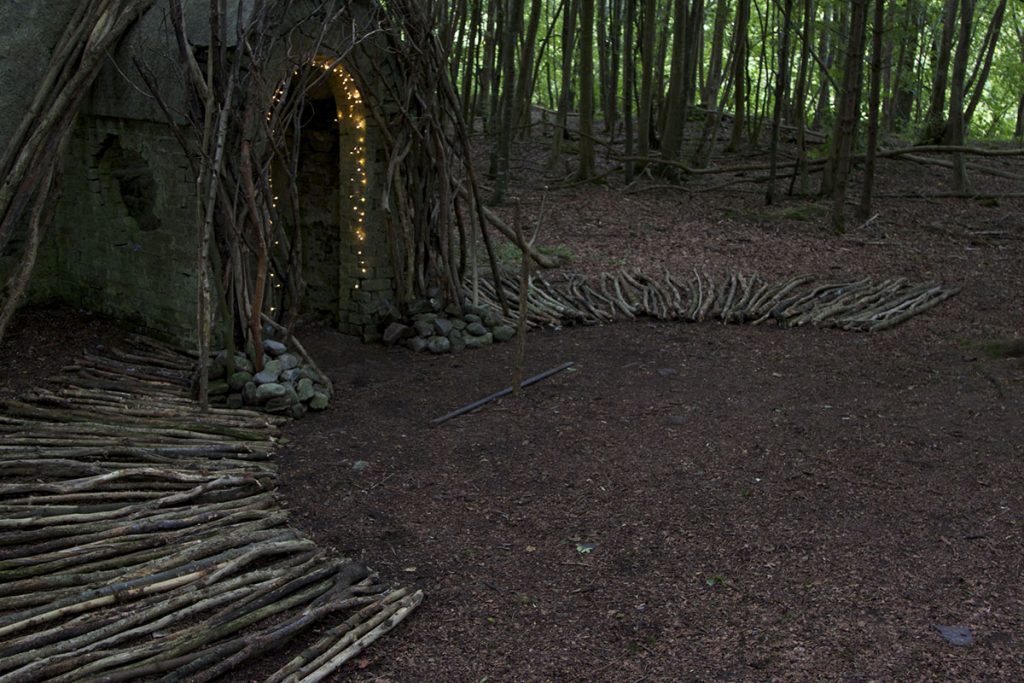
Often your work is around events and event planning. Discuss this aspect of your work as an artist.
How did you move from advertising to artist?
After I left advertising I began by making things for shop windows and exhibitions. Being a self-taught artist, each new opportunity allowed me to play with different materials and learn new techniques. After about a year or two of building up a folio, an old friend who was now the stylist for a big Melbourne event company got in touch and asked me to create a large piece for a wedding – which ended up being Crystal Palace. After that, most of the work I did was primarily for events – allowing me fabulous opportunities to create all kinds of wonderful things and work with new mediums, always teaching myself along the way and learning as I went.
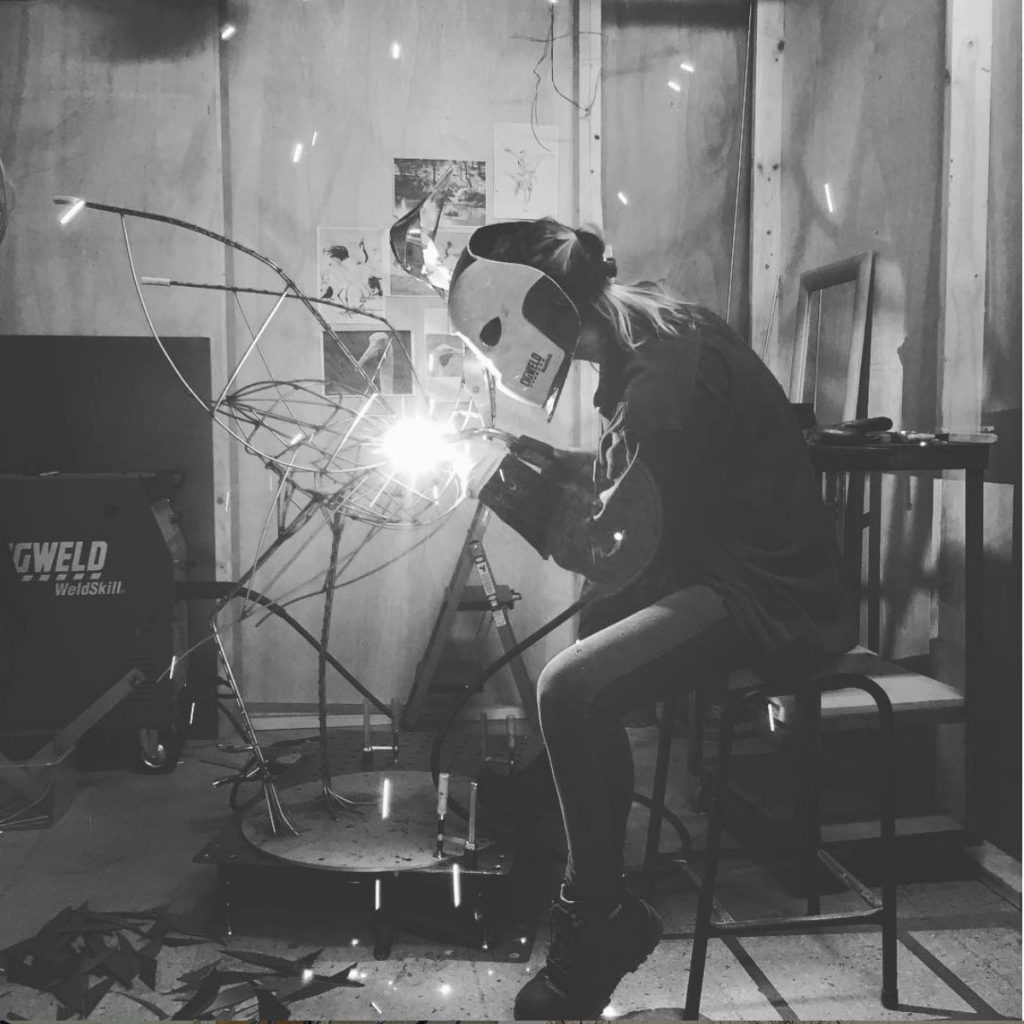
How do you combine salvaged and new materials together to make a piece?
Most of the time it’s as simple as using the offcuts from previous projects to create new things. For example, with the recent NGV project where I used the paper off cuts from the fish sculptures to make the coral. With all my metal sculptures I am always using all the scraps to create the animal features. I find the shapes of the offcuts are always so much more interesting than what you would cut yourself.
Many of your pieces are temporary. How do you decide when to discard or reuse?
After a job many of my temporary pieces end up suspended from the roof of our warehouse, creating a wonderful surreal scenery above our heads. However, for the ones that aren’t durable enough I will break them down into pieces I can reuse in future projects.
Contact:
Georgie Seccull
georgieseccull.com
Deborah Blakeley, Melbourne, Australia
Interview by Deborah Blakeley, June 2019
Think a colleague or friend could benefit from this interview?
Knowledge is one of the biggest assets in any business. So why not forward this on to your friends and colleagues so they too can start taking advantage of the insightful information the artist has given?
Other artists you may be interested in:


